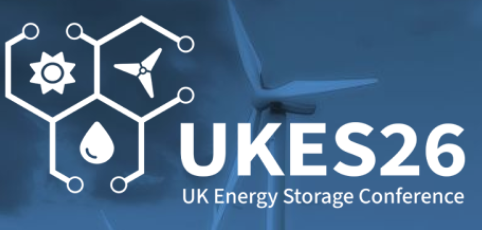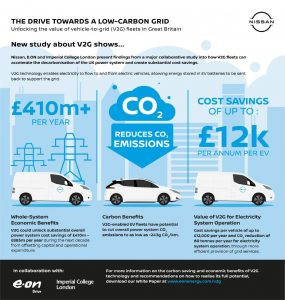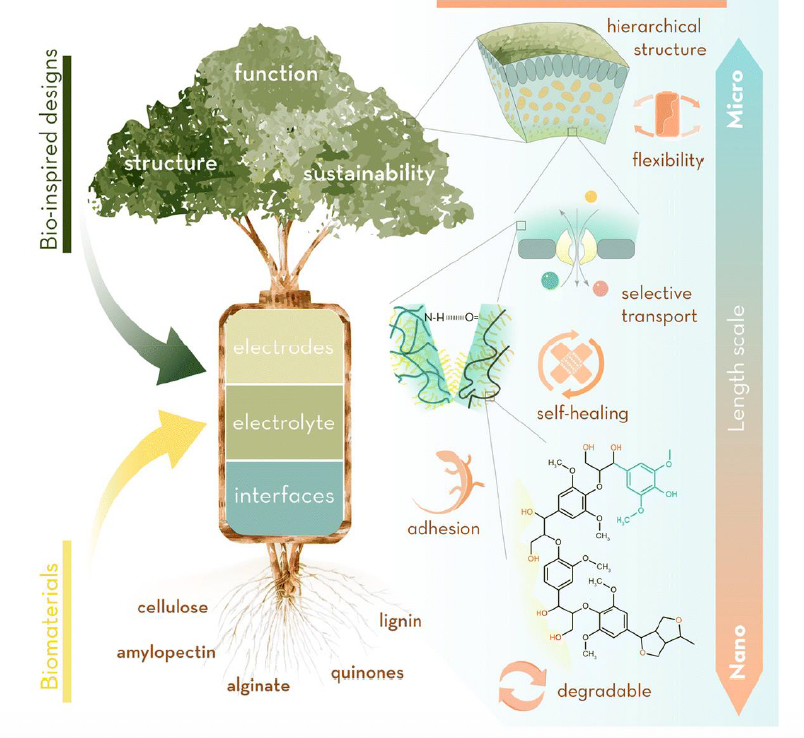
Nissan, E.ON Drive and Imperial College highlight the carbon saving and economic benefits of Vehicle-to-Grid technology

Vehicle-to-Grid technology can help deliver overall power system cost savings of up to £885m per year
Adopting this two-way charging technology will accelerate progress in decarbonising the UK’s power system
The Nissan LEAF and e-NV200 are the only volume manufactured V2G-capable electric vehicles in the UK
A White Paper published last week- the result of a major collaboration involving carmaker Nissan, E.ON Drive and Imperial College London – explores how the bi-directional charging capability of electric vehicles (EVs) could contribute to lower emissions and help achieve long-term goals in relation to climate change.
The White Paper offers supporting recommendations and calls for the introduction of incentives to accelerate widespread adoption of vehicle-to-grid (V2G) charging systems, enabling potential benefits to be unlocked.
It also addresses some of the challenges that will be faced in the early days of V2G, particularly around creating a reliable business case in the context of evolving energy markets and regulation.
Publication of the White Paper follows news in August of the first large-scale V2G trial involving 20 chargers installed at Nissan’s European Technical Centre in Cranfield.
Key insights:
The White Paper indicates that V2G could deliver the following benefits:
The potential for reducing carbon emissions from the power system to as low as -243gCO2/km.
Electricity system operation cost savings of up to £12,000 per annum per EV and CO2 reduction of approximately 60 tonnes per annuam per EV.
Annual fleet V2G charging benefits could range between £700-£1,250 per vehicle.
Professor Goran Strbac, Chair in Electrical Energy Systems at Imperial College London said: “Our research has demonstrated that V2G can provide very substantial economic benefits to the power system as well as reduce carbon emissions. This revealed that the additional flexibility provided by V2G fleets can considerably improve system efficiency and reduce investment in new low-carbon generation, while meeting national decarbonisation targets”.
For more information about how businesses with fleets can get involved with V2G, visit www.eonenergy.com/v2g
Read the full article here.













